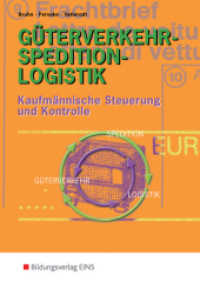- ホーム
- > 洋書
- > ドイツ書
- > Mathematics, Sciences & Technology
- > Computer & Internet
- > internet, data communication, networks
Full Description
The authors first present an explicit overview of crowdsensing systems and privacy challenges and briefly discuss how the noise added by perturbation-based privacy-preserving techniques could inevitably degrade data quality and facilitate the success of data poisoning attacks on crowdsensing.








